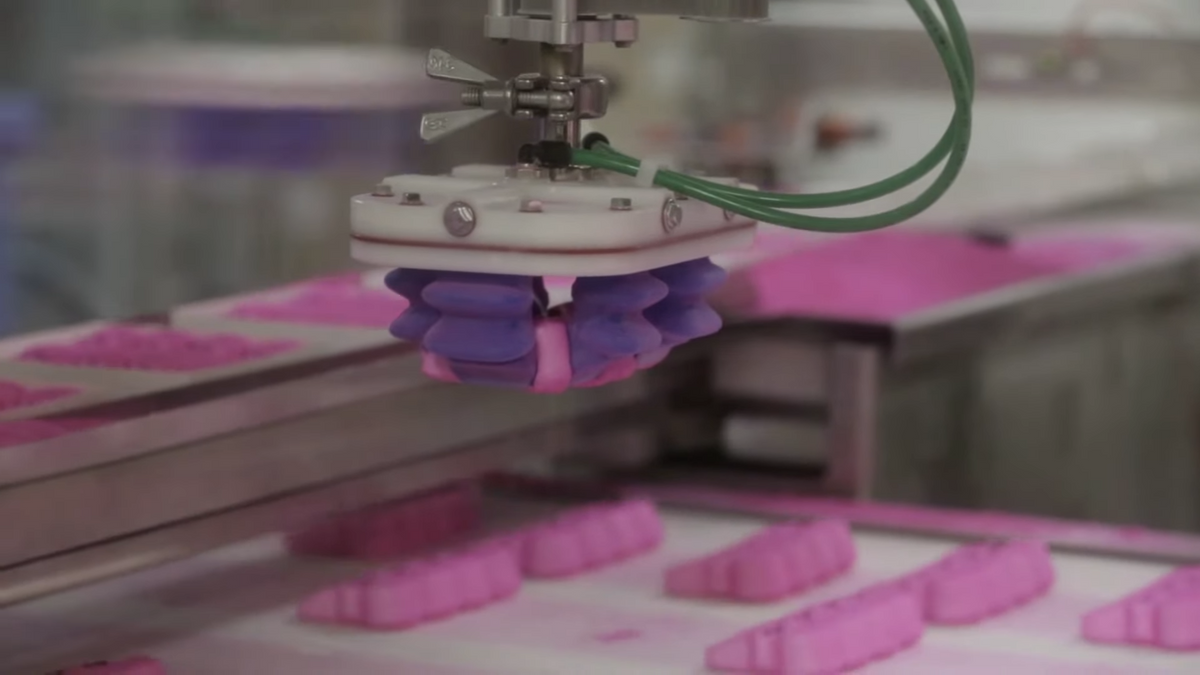Video Friday is your weekly selection of awesome robotics videos, collected by your friends at IEEE Spectrum robotics. We also post a weekly calendar of upcoming robotics events for the next few months. Please send us your events for inclusion.
Robotics Summit & Expo: 10–11 May 2023, BOSTON
ICRA 2023: 29 May–2 June 2023, LONDON
RoboCup 2023: 4–10 July 2023, BORDEAUX, FRANCE
RSS 2023: 10–14 July 2023, DAEGU, SOUTH KOREA
IEEE RO-MAN 2023: 28–31 August 2023, BUSAN, SOUTH KOREA
CLAWAR 2023: 2–4 October 2023, FLORIANOPOLIS, BRAZIL
Humanoids 2023: 12–14 December 2023, AUSTIN, TEXAS
Enjoy today’s videos!
Happy Peep Consumption Day!
[ Soft Robotics ]
Appropriate facial expressions for Ameca in this video are selected by GPT-3 . We also tried GPT-4; the processing time with 4 was longer and made Ameca appear less responsive.
[ Engineered Arts ]
Kittens: The enemy of lazy robots everywhere.
I’m very curious about what “<3 Fluffy Pants” is all about.
[ Agility Robotics ]
This is a summary video of KIMLAB Robot Demos at UIUC Engineering Open House 2023.
[ KIMLAB ]
SRI International’s latest robotic application focuses on the integration of active surfaces with a compliant robot grasper to provide a high dexterity and robustness for robot in-hand manipulation. The grasper can pick up a wide range of sizes and shape in power grasps and move them around in different axes without lifting the fingers. The ability to reorient objects in a power grasp provides unique value to both industrial and domestic applications.
Sigh, I wish my fingers could do that.
[ Yilin Cai ]
Our new walk is based on our 2022 walk. To ensure stability, we use a regulation to modify the allowed rotation speed of the support foot’s joints. Thus, the different leg parts will still execute the intended motion, but based on the center of mass and the measured rotation errors of the support foot, some leg parts are slowed down if needed. Additionally, to handle more extreme cases at higher walking speeds, a neural network is used to predict future joint-position measurements to calculate future position errors. The robots are now able to handle more difficult situations. Also, as an unintended effect, the robots lift up on the tip of the supporting foot, just like humans do.
[ B-Human ]
A motion platform is just an upside-down quadruped robot.
[ GitHub ]
This is getting out of hand—now there are two of them!
[ Sanctuary AI ]
The little doghouse in this video is super cute.
[ Unitree ]
ORNL researchers study the effects of energy use on waterways and develop solutions to limit water pollution. This segment demonstrates how scientists use drones to assess biodiversity and ecosystem health.
[ ORNL ]
More and more new cars come equipped with autonomous driving features. By 2030, an estimated 4 million fully autonomous vehicles will travel U.S. roadways. A significant challenge is ensuring these vehicles are safe enough to operate on public roads.
[ NSF ]
This GRASP Seminar is from Larry Matthies at the Jet Propulsion Laboratory, on “Autonomous mobility in Mars exploration: recent achievements and future prospects.”
This talk will summarize key recent advances in autonomous surface and aerial mobility for Mars exploration, then discuss potential future missions and technology needs for Mars and other planetary bodies. Rover mission concepts recently suggested for the moon would drive about 1,500 to 2,000 kilometers in under 4 years, which requires significant advances in autonomy. Successors to the Ingenuity helicopter are now under development for use in a mission planned for later this decade to return Mars samples to Earth that Perseverance is collecting. Much larger helicopter concepts are being studied to enable carrying larger science instrument payloads for potential future Mars missions. Robotic surface and aerial vehicles, as well as drilling systems for subsurface access, potentially could play a role in NASA’s goals for a human mission to Mars roughly two decades from now.
[ GRASP ]
Evan Ackerman is a senior editor at IEEE Spectrum. Since 2007, he has written over 6,000 articles on robotics and technology. He has a degree in Martian geology and is excellent at playing bagpipes.



